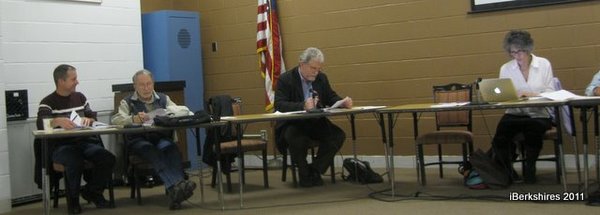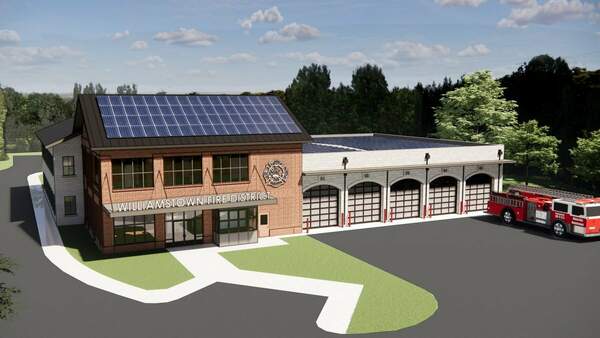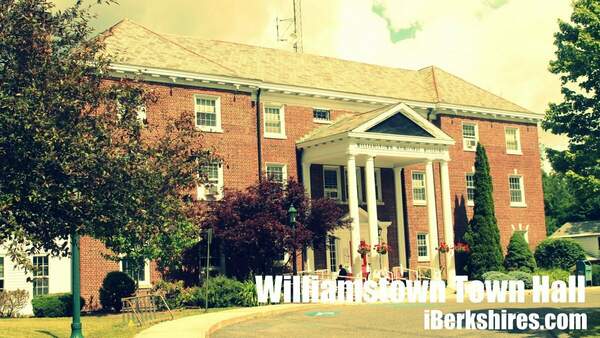
Mt. Greylock School Officials Uncover More Health Concerns
WILLIAMSTOWN, Mass. — The ventilation system in the gym at Mount Greylock Regional High School has been shut down over concerns asbestos could have been blowing into the gym for years.Superintendent of Facilities Jesse Wirtes, a member of the Building Subcommittee, told his colleagues on Tuesday that he shut down the primary ventilation after finding what could be an old asbestos wrap on the pipes.
While recent testing by the Department of Public Health has proved the air quality to be better than school officials had thought, this new discovery will require more testing.
Wirtes said on Tuesday that he called in environmental consultants, Ecogenesis, to test the material after he found the wrapped pipes a few days ago. The wrap ties together hot water pipes and return air system underneath the gym floor.
"We want to be certain if there is or isn't [asbestos]," Wirtes said. "I shut down the ventilation system under the gym floor until we find out and we are running on two other systems."
He expects the results in the next few days — but it's not the only possible health problem hiding underneath that floor. School Committee Chairman Robert Ericson, who also is on the subcommittee, said when he was constructing new ramps during the summer, he found a layer of rodent feces underneath the gym. Now he's concerned because the air is coming into the gym.
"It's just another source of contamination," Ericson said.
These findings are the latest problems that have been found with the aging building since school officials began ramping up their push to build a new school. Many of the issues from air quality to noise to mold are outlined in the school's statement of interest to the state School Building Authority in an attempt to get approved for reimbursement to build. The Building Subcommittee approved the draft of this year's submission on Tuesday.
"We're learning a lot about this building," Wirtes said.
Recently, the school performed testing on the air quality and mechanisms, and preliminary reports show that the system to be better than officials originally thought but most of the building is still noncompliant with building codes. The newer 1968 addition to the school proved to have "reasonable" air circulation levels but some rooms still have circulation at a third of the state code rates. Vents are closed in classrooms when the heating system is on so circulation decreases significantly in the winter, officials said.
"The ventilation is better than its ever been because of a cleanup but it's still not up to code," Paula Consolini, who headed the effort to rewrite the school's SOI, said. "This aggressive cleaning has gotten it as good as it will ever be."
During the summer, Wirtes power washed the vents in every classroom and the testing was done without the heating system turned on. One of the classrooms was even shut down in recent years because of excessively poor air quality and some teachers that have contracted sarcoidosis have cited the air quality as the cause for the disease. The heating system, despite replacement of new boilers, still does not keep the entire school heated to the point where teachers and students wear coats in class during the winter. School officials also cite that as a health concern.
Noise levels coming from the heating and air system have led teachers to turn the vents off. Building Committee member David Backus recently found that all classrooms had noise levels above American National Standards Institute building codes.
Asbestos have also been found in many of the floor tiles in the 1960s section of the school as well as on a fire curtain in the auditorium.
Officials also expressed in the SOI concern over fire protection. According to school officials, the fire detection systems have never been upgraded and are not up to building codes. The SOI also cites the nearest water source in case of a fire as being a mile away. The school also does not have a water storage tank, fire pump or emergency generator for fire, nor does it have a sprinkler system.
But health concerns are not the only problems the school lists on the SOI. It is too big and sprawling for its population, officials said, and that leads to inefficient energy usage and security issues. The school has many courtyards, windows and long hallways that increase the amount of energy usage. The windows are all single-paned and the roof has insulation with an R-value of 21 while the exterior walls have no insulation at all.
The school's infrastructure is reducing teachers' access to technological tools and because the gas system and safety mechanisms in science laboratories have become ineffective, the science classes are now shipped to Williams College to do laboratory work. Many of the classrooms are not handicapped -accessible.
The SOI will now have to be approved by the School Committee before it is submitted to the MSBA.
WILLIAMSTOWN - 11-17-2011 - The committee accepted bids from Williamstown-based Integrated Eco Strategy and
Pittsfield-based EDM Engineering to...
WILLIAMSTOWN - 10-14-2011 - "We've decided that it is appropriate to have more testing done." — Paula Consolini
WILLIAMSTOWN - 08-26-2011 - "There is a lot of conversation that needs to take place way before that vote." — Carrie Greene.
WILLIAMSTOWN - 04-08-2011 - "You can't design a school until you know what you are going to put in it." — Carrie Greene
WILLIAMSTOWN - 07-30-2011 - "We need to get more serious about where our kids are going to school," — Allen Jezouit.
Tags: MGRHS, public health,

 WILLIAMSTOWN, Mass. — The Prudential Committee on Wednesday signed off on more than $1 million in cost cutting measures for the planned Main Street fire station.
WILLIAMSTOWN, Mass. — The Prudential Committee on Wednesday signed off on more than $1 million in cost cutting measures for the planned Main Street fire station.













